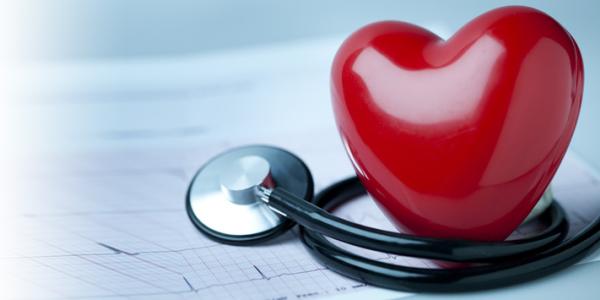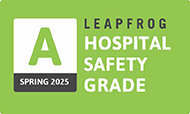


By Cindy Wang, MD FACC
Dr. Cindy Wang attended New York Medical College for her medical degree and Montefiore Medical Center for her Internal Medicine residency. She completed a cardiology fellowship at California Pacific Medical Center and a specialty fellowship in Advanced Echocardiography and Cardiac Imaging at Stanford University Medical Center. Dr. Wang has been a general cardiologist with the Advanced Cardiovascular Specialists team since 2019. Her medical interests include Echocardiography/ Interventional Echocardiography, Cardiac CT and MRI, Preventive care, Valvular/Structural Heart Disease.
請點擊此轉換成中文
The distinct functions of the heart are like those of a house. There's plumbing, electricity, and foundation. Plumbing in the heart is the coronary arteries. These are small arteries on the surface of the heart that feed the heart muscle. They're the ones that get blocked if you have a heart attack. The electric system in your house is like the conduction system of the heart. It's a way to look for different types of arrhythmias (irregular or abnormal heartbeats). The foundation is the four chambers of the heart, and the doors between the chambers are the valves. Valves allow blood to flow smoothly from one area to another and do not allow flow back.
Q: For an annual checkup, what kind of cardiac test could be performed for seniors? I’m concerned as I have an irregular heartbeat.
A: The most common cardiac test is an EKG. An EKG shows the electrical rhythm in the heart. It shows where the rhythm originated from and can detect the cause of an irregular heartbeat. Some irregular heartbeats can be extra beats (premature atrial or ventricular contractions), and some can be more concerning like an arrhythmia called atrial fibrillation.
Q: If heart rhythm is regularly irregular, does it mean there is a problem with the heart? What does it mean and what test do you suggest?
A: Regularly irregular means that at the same interval there is irregularity. Your heart will be beating regularly and an extra beat jumps in early. Then this pattern repeats itself. An example of this would be premature beats, where every third or fourth beat could be a premature or extra beat. Your doctor can catch this on an EKG. If you are not having the symptoms at the time of the EKG, your doctor may use a Holter monitor over a longer period to examine your rhythm. The Holter monitors we use now are usually sticky patches that stay on your chest for several days. If you have symptoms, there is a button on the device to correlate your symptoms with the rhythm.
A stress test is a way to understand how the heart responds to exercise. It will monitor your heart rate, blood pressure, EKG changes, and arrhythmia. The heart is pumping faster and harder, so it can test for blockages in the coronary arteries.
Prior to the test, you will be asked to stop some of your heart medication. You will wear exercise clothes; a blood pressure cuff will be placed on your arm and electrodes on your chest. Then you exercise on the treadmill. (In some places, a bike may be used instead of a treadmill.) Steepness and speed will change. An EKG technologist or nurse will monitor your test. A cardiologist must be nearby to supervise the exam. When your heart reaches 85% of your maximum predicted heart rate, it will be a satisfactory test. Then then nurse or technologist will tell you to slow down.
When you do a treadmill stress test, the sensitivity is 68% and specificity 77%. Specificity means how accurately the test can diagnose the condition. Unfortunately for women, the sensitivity and specificity is even lower than that. In some cases, your doctor may add additional types of imaging to improve sensitivity and specificity. For instance, they may combine the treadmill test with an echocardiogram (stress-echocardiogram).
Stress Echocardiogram: Stress echocardiogram starts like a treadmill test, but additional echocardiogram images are taken afterwards. If you cannot exercise due to injury or lack of physical stamina, a similar test can be done using a chemical to “simulate” exercise. For stress echocardiograms, a medication called dobutamine increases the heart rate and demands on the heart.
Nuclear stress testing: Myocardial perfusion imaging is a type of stress test where the blood flow in the heart muscle is evaluated with and without exercise. You exercise on a treadmill, then radioactive isotopes are injected into the blood to localize blockages. Similar to stress echocardiogram, if you cannot exercise, a medication called regadenoson is used to perform the stress portion.
If any stress tests show abnormalities, the gold standard is to do an angiogram or left heart catheterization. Catheters go directly into the body and dye is used to enhance the arteries.
A transthoracic Echo (TTE) is an ultrasound of the heart. A probe on the outside of the body is used to look inside the heart. Ultrasound waves are directed towards the heart to look at the muscle, valves, and pressure. A useful measurement is the left ventricular ejection fraction. This measures how strong the largest chamber of the heart is.
A significant amount of information on the structure and function of the heart can be gained in a non-invasive way with no radiation exposure. Some limitations in image quality can occur when patients have a larger body mass or have mobility issues. On some occasions, a special echocardiogram probe can be used that goes down the esophagus to take in-depth pictures of the heart. This test is called a transesophageal echocardiogram (TEE) and is usually performed by a physician while the patient is sedated.
A newer technological advancement is to incorporate 3D-echocardiography. These high-resolution images can help cardiologists obtain a better spatial understanding of the cardiac structures.
Cardiac computed tomography (cardiac “CAT scan”) is another non-invasive way to look at the structures of the heart. It is used prior to procedures or surgery to help the surgeon, interventional cardiologist, or electrophysiologist plan cardiac interventions. CT angiography is used to evaluate the size of blood vessels in the chest and for other conditions like atherosclerosis and aneurysms. Coronary CT angiography (CTA) can create detailed evaluations of the coronary arteries, including plaque or atherosclerosis, and can tell us how narrow those blockages are. A newer technology can provide information on the significance of the blockage by evaluating blood flow in the vessels. For cardiac CT you do not exercise for the test, so the effect of exercise on the heart cannot be evaluated.
This is a low dose CT scan of the heart used to evaluate calcification in the coronary arteries. The more calcium in the arteries, the higher the amount of plaque or atherosclerosis. This is a preventive procedure. Your insurance company may not pay for it, but it is usually affordable. This test helps the cardiologist or primary doctor make decisions about risk and whether medication should be taken to halt the progression of plaque. For example, we treat patients who have an LDL cholesterol over 190 with statin medication. Many patients may have an abnormal LDL between 140 and 170 with or without risk factors for heart disease, and it may be a hard decision whether to treat it.
Q: In Taiwan, most hospitals offer self-pay physical exams that include cardiac CT scans. How should we determine whether to take the risk of radiation?
A: This is certainly a personal decision to make. If you have risk factors for cardiac disease (middle aged and above, diabetes, high blood pressure, family history), you may consider doing them. In Taiwan, the cost of the test will be more affordable and can allow you to better understand your health. If you are uncertain, talk to your doctor about your concerns.

Identify your risk factors and what to do if you are at risk.